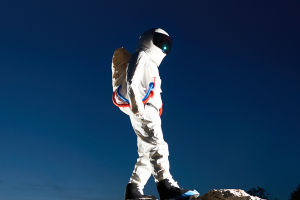Welcome, Lykkers! How long would you like to stay in the space if you could have the possibility? Space missions are always an incredible mix of adventure, innovation, and challenges.
For those who follow cosmic exploration with curiosity and wonder, the latest mission involving astronauts Sunita Williams and Butch Wilmore offers fascinating insights.
After nearly 300 days aboard the International Space Station (ISS), the physical transformations observed in both astronauts have sparked interest among scientists and the public alike. Let’s dive into the real impact long-term space travel has on the human body.
Extended Stay in Orbit
A mission that went far beyond its schedule. Williams and Wilmore launched on June 5 aboard Boeing's Starliner with a planned eight-day mission. However, technical issues prevented a timely return, and they remained aboard the ISS for 289 days.
Their return aboard SpaceX’s Dragon vehicle marked the end of an unexpected chapter in human spaceflight. Although not the longest stay in orbit on record, their prolonged mission offers key data for future research.
Physical Effects of Microgravity
Muscle and bone mass loss remains a primary concern. Despite rigorous daily workouts—up to two and a half hours—and supplementation, astronauts experience a significant reduction in muscle and skeletal density.
NASA reports a 1% reduction in structural density for every month spent in microgravity, unless countermeasures are in place. This condition, often linked to lack of physical activity, also affects individuals confined to bed rest on Earth and is actively studied by space agencies worldwide.
Cardiovascular Changes and Circulation Challenges
Gravity influences more than just weight—it guides circulation. Without gravitational pull, the human heart does not need to pump blood with the same force. This shift can alter blood flow patterns, increase pressure in the upper body, and even cause facial puffiness.
Blood flow irregularities might result in clots or contribute to heart rhythm issues. As a result, astronauts often appear slimmer and are sometimes carried out on stretchers upon return.
DNA and Genetic Impact
Radiation remains a silent risk in outer orbit. Outside Earth’s atmospheric shield, radiation levels rise sharply. Prolonged exposure is known to affect the structure and function of DNA, especially segments known as telomeres.
These tend to stretch while in space but shrink rapidly after reentry—an effect that typically occurs gradually with age. There is ongoing research into how such exposure may influence gene expression, bone strength, and immune system behavior.
Changes in Appearance
More than just tired eyes and pale skin. Photographs taken before and after the mission reveal noticeable differences. Sunita Williams, for example, appeared with longer and grayer hair, a result of time and the inability to maintain grooming routines.
Microgravity affects scalp pressure, which can influence hair texture and quality. The astronauts’ skin also became thinner, making it prone to cuts and irritation, though it retained a soft texture. Without exposure to the sun, their complexions became significantly paler.
Disrupted Sleep and Recovery
Resting in space is more complicated than it sounds. Aboard the ISS, astronauts sleep in sleeping bags attached to the walls. They must wear eye masks and use earplugs to block light and mechanical noise.
The lack of proper rest can lead to fatigue and a drawn appearance. Upon return, medical tests and rehabilitation are essential for recovery. Re-adapting to gravity and restoring physical balance takes time, patience, and care.
Scientific Value of Long Missions
Every day in space provides critical data. While this mission was not a record-breaker—Valeri Poliakov still holds the longest continuous spaceflight at 437 days—each extended stay enriches the understanding of how humans respond to prolonged periods away from Earth's surface.
Researchers continue to monitor astronauts such as Peggy Whitson and Oleg Kononenko, who have accumulated the most days in orbit through multiple missions.
Compensation: A Modest Reward
Long missions are not driven by financial incentive. Despite the physical toll, the monetary gain for this extended stay was minimal. Reports state that each astronaut received an extra $5 per day during their additional time in space, totaling roughly $1,430 more than their annual salary.
Compared to Earth-based research studies that offer higher compensation for simulated space conditions, the figures highlight a dedication to science rather than wealth.
Final Reflections
A new frontier of discovery begins with every mission. Though their journey was longer than expected, Sunita Williams and Butch Wilmore’s time aboard the ISS has provided valuable information for space medicine and human biology.
From muscle deterioration to changes in gene behavior, their experience adds a new layer to what is known about life beyond Earth. It also prepares the groundwork for future missions that may go deeper into space or last even longer.
Curious Minds Keep Exploration Alive
Thank you for joining this exploration into the fascinating effects of long-duration space missions. As space agencies prepare for journeys to other celestial bodies, stories like these help illuminate the path ahead. The stars are not just above us—they’re calling us to learn more, step by step.


